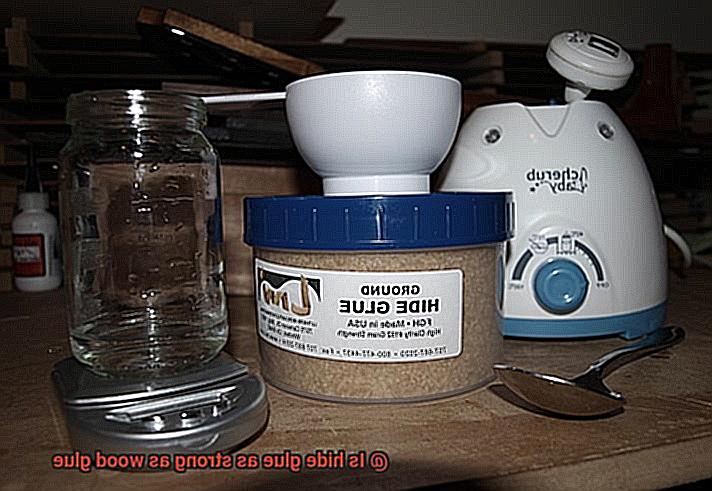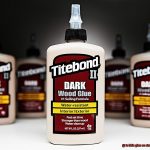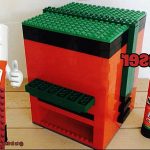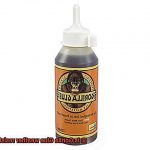In the world of woodworking, the glue you choose can make or break your projects. It’s like picking a team for an epic battle – and in this corner, we have hide glue, the ancient warrior with centuries of tradition behind it. And in the other corner, we have wood glue, the modern contender armed with impressive bonding capabilities.
But here’s the million-dollar question: is hide glue as strong as wood glue? In this blog post, we’re diving deep into the captivating realm of woodworking adhesives to unravel their individual strengths and weaknesses. So buckle up and get ready to make an informed decision for your own projects.
From traditional workshops to cutting-edge construction sites, hide glue has been revered for its unwavering strength and resilience. Derived from animal collagen, this adhesive has stood tall throughout history. But wait. Wood glue has burst onto the scene in recent years, boasting remarkable bonding powers and convenience.
Throughout this blog post, we’ll explore what sets these two adhesive powerhouses apart – their bonding strength, drying time, versatility, and compatibility with different woodworking materials. By the end of this journey, you’ll have a crystal-clear understanding of whether hide glue truly matches up to wood glue in terms of strength or if our modern contender holds a distinct advantage.
So join us on this adventure as we uncover the secrets of hide glue and wood glue. Whether you’re a seasoned craftsman or a curious DIY enthusiast, prepare to witness an age-old debate unfold before your eyes. Get ready to enhance your understanding of these remarkable adhesives that hold our woodworking dreams together.
Different Types of Glue: Hide Glue vs Wood Glue
Contents
- 1 Different Types of Glue: Hide Glue vs Wood Glue
- 2 The Strength of a Glue Joint: Factors to Consider
- 3 Hide Glue Advantages: Longer Open Time and Reversibility
- 4 Wood Glue Advantages: Water-Resistance and Versatility
- 5 Comparing the Strengths of Hide Glue and Wood Glue
- 6 Choosing the Right Type of Glue for Your Project
- 7 Tips for Maximizing the Strength of a Glued Joint
- 8 Conclusion
Choosing the right glue is crucial for creating strong and durable bonds in woodworking projects. Hide glue and wood glue are two commonly used types of adhesive in woodworking, each with its own unique properties. In this article, we will compare and contrast hide glue and wood glue in terms of their strength, properties, and applications. By understanding the differences between these two glues, you can make an informed decision on which one is best suited for your woodworking needs.
Understanding Hide Glue:
Hide glue, also known as animal glue or protein glue, has been used for centuries and is derived from collagen found in animal connective tissues. It is available in liquid or granular form and can be mixed with water to create a workable adhesive. Hide glue is known for its strong bond and excellent adhesion to wood surfaces. It offers a long open time, allowing for adjustments and repositioning during assembly.
Exploring Wood Glue:
Wood glue is a synthetic adhesive specifically formulated for bonding wood surfaces. It comes in various forms such as white glue, yellow glue, and polyurethane glue. Wood glue is typically waterproof and provides a strong bond that can withstand the stresses and strains of woodworking projects. It sets relatively quickly and forms a permanent connection between wooden surfaces.
Strength Comparison:
Both hide glue and wood glue offer reliable bonds, but they have different strengths. Hide glue is preferred in restoration work because it can be softened with heat or moisture, allowing for easy disassembly or repair when needed. This makes it ideal for antique furniture restoration or instrument making where preserving the original joinery is essential. Wood glue, on the other hand, creates a strong and permanent bond that is resistant to heat and moisture, making it ideal for general woodworking projects.
Gap-Filling Properties:
One advantage of wood glue over hide glue is its gap-filling properties. Wood glue can fill slight imperfections or irregularities in wood surfaces, ensuring a tight bond between the pieces being glued together. This makes it suitable for joining pieces with slight gaps or unevenness, resulting in a more solid and professional-looking finished product. Hide glue, on the other hand, may not be as effective in filling gaps due to its thinner consistency.
Shelf Life:
Hide glue has a limited shelf life once it is mixed with water and tends to spoil after a few weeks, especially in warm and humid conditions. This can be inconvenient for woodworkers who may not use glue on a regular basis. Wood glue, on the other hand, has a longer shelf life and can be stored for an extended period without losing its effectiveness. This makes wood glue more convenient for those who may not use glue frequently.
In conclusion, both hide glue and wood glue are effective adhesives for woodworking projects, but they have their own unique properties.
The Strength of a Glue Joint: Factors to Consider
In the world of woodworking, glue is the unsung hero that holds pieces of wood together with strength and reliability. However, not all glue joints are created equal. The strength of a glue joint depends on several factors that must be carefully considered to ensure a durable and long-lasting bond. In this article, we will delve into these factors in detail, equipping you with the knowledge to make informed decisions about glue selection for your woodworking projects.
Adhesive Properties:
To begin, it is crucial to understand the adhesive properties of different glues. Hide glue, derived from animal collagen, offers excellent initial tack and is effective at penetrating porous surfaces. Conversely, wood glue (PVA) forms a strong bond with wood fibers. Consider the specific needs of your project and choose the glue with adhesive properties that best match those requirements.
Open Time:
Open time refers to the period during which the glue remains workable before it starts to cure. Hide glue has a shorter open time, necessitating swift work once applied. Wood glue provides a longer open time, allowing for more extended assembly and adjustment periods. Consider the complexity of your project and choose a glue with an open time that aligns with your work pace.
Clamp Time:
Clamp time is the duration pressure needs to be applied to the glued joint for optimal bonding. Hide glue requires longer clamp time as it takes more time to set and reach maximum strength. Wood glue often achieves sufficient bond strength within a shorter clamp time. Consider the assembly process and choose a glue that accommodates your desired clamp time.
Moisture Resistance:
Moisture resistance is a vital factor when evaluating the strength of a glue joint. Hide glue has poor resistance to moisture and high humidity conditions, making it susceptible to weakening over time. Wood glue offers better moisture resistance, making it suitable for applications exposed to varying levels of humidity or occasional water contact.
Longevity:
The longevity of the glue joint is crucial for ensuring a strong bond that withstands the test of time. While hide glue has a long history of durability, wood glue’s synthetic composition is designed for long-lasting bonds. Consider the intended lifespan of your project and choose a glue that aligns with your longevity expectations.
Application:
The application method significantly impacts the strength of a glue joint. Proper surface preparation, using sufficient adhesive, and applying appropriate clamping pressure are essential steps for achieving a strong bond. Pay attention to these details during the application process to ensure optimal results.
Wood Type:
Lastly, consider the type of wood being joined. Some woods have natural oils or resins that can interfere with certain glues’ adhesive properties. Ensure compatibility between the glue and the specific wood species to achieve a strong and reliable bond.
Hide Glue Advantages: Longer Open Time and Reversibility
When it comes to gluing wood, there is an overwhelming array of options available on the market. But amidst this sea of choices, one type of glue stands out from the rest: hide glue. This ancient adhesive offers several distinct advantages over other types of glue, particularly its longer open time and reversibility.
Let’s start with the longer open time. Open time refers to the period during which the glue remains workable before it starts to set. Hide glue has a significantly longer open time compared to wood glues. This means that you have more time to work with the glue, allowing for greater flexibility in the assembly process. Whether you’re working on a complex woodworking project or a large-scale piece of furniture, hide glue gives you the freedom to take your time and make precise adjustments without rushing against the clock.
The longer open time of hide glue can be attributed to its formulation and composition. Unlike wood glues that are typically made from synthetic polymers, hide glue is derived from collagen, a protein found in animal tissues. This unique composition allows hide glue to be heated and dissolved in water, making it easier to work with and manipulate. If the glue starts to set prematurely, you can simply reheat it to restore its workability. This feature is especially useful when working on intricate projects that require meticulous attention to detail.
But the advantages of hide glue don’t stop there. Another notable advantage is its reversibility. Once hide glue has dried and bonded two pieces of wood together, it can be easily undone by applying heat and moisture. This makes hide glue ideal for restoration work or repairs where preserving the original integrity of the object is crucial. By applying heat and moisture to the dried hide glue, it softens and can be separated without causing damage to the wood.
Furthermore, the reversibility of hide glue offers practical benefits as well. If a joint needs to be disassembled for any reason, such as moving or transporting furniture, hide glue allows for easy disassembly with minimal damage. This is particularly advantageous when working on projects that require frequent assembly and disassembly.
Wood Glue Advantages: Water-Resistance and Versatility
Wood glue is a game-changer for woodworkers and craftsmen, offering advantages that set it apart from other adhesives. Its outstanding water-resistance and impressive versatility make it a must-have in any woodworking arsenal.
Let’s dive into the details starting with water-resistance. While other glues crumble when faced with moisture, wood glue stands strong. Specially formulated to withstand exposure to water and humidity, it retains its adhesive properties even in the wettest conditions. This makes it perfect for outdoor projects or anything that may come in contact with water. Whether you’re building a deck, a birdhouse, or a wooden planter, wood glue keeps everything securely together, rain or shine.
But wait, there’s more. Wood glue is also incredibly versatile. It can be used on all types of wood surfaces, from hardwoods to softwoods and even plywood. This means you don’t have to worry about which adhesive to choose for each project. With wood glue in your toolkit, you have one adhesive that does it all. Talk about simplifying your life.
Now let’s talk about strength. Wood glue creates bonds that are as tough as nails (pun intended). Once properly applied and allowed to dry, it forms a durable connection between pieces of wood that can withstand all the stresses and strains that wood may experience. Whether you’re building furniture or crafting intricate woodworking projects, wood glue ensures that your creations will stand the test of time.
Speaking of time, wood glue is no slacker in that department either. Once cured, it forms a permanent bond that will last for years to come. You won’t have to worry about your hard work falling apart or joints coming loose. Wood glue keeps everything solid and secure so you can enjoy your masterpiece for generations.
Not only is wood glue strong and reliable, but it’s also easy to use. It comes in a liquid form that can be applied with a brush or spreader, making application a breeze. And because it has a relatively long open time, you have plenty of time to adjust and position your pieces before the glue sets. This is especially handy for complex or intricate projects that require precise alignment.
Last but not least, safety is always a top priority. Wood glue is non-toxic and safe to use. Most modern wood glues are water-based and don’t contain any harmful chemicals or fumes that could pose health risks. This makes it an excellent choice for both professional woodworkers and hobbyists alike.
Comparing the Strengths of Hide Glue and Wood Glue
Among the choices available, hide glue and wood glue have emerged as two popular options, each with its own unique strengths and weaknesses. In this exploration of glues, we will delve into the advantages and disadvantages of hide glue and wood glue, shedding light on their contrasting properties.
Firstly, let’s discuss hide glue, a traditional adhesive that has stood the test of time. Derived from animal collagen, hide glue has been trusted by woodworkers for centuries due to its exceptional strength and durability. It forms a bond with wood fibers that can withstand heavy loads and stress, making it ideal for demanding applications like furniture making and instrument building. When using hide glue, woodworkers can rest assured that their creations will stand strong against the forces of nature.
In contrast, wood glue offers a different set of benefits. This synthetic adhesive is specially formulated to bond wood surfaces together. While it may not match the sheer strength of hide glue, it compensates with its flexibility. Wood glue allows for the natural movement and expansion of wood, ensuring that joints remain intact even when exposed to temperature and humidity fluctuations. This flexibility is particularly crucial in preventing cracks and splits in wooden structures over time.
Another aspect to consider is ease of use. Hide glue requires special preparation before application, involving heating and mixing with water to achieve the desired consistency. Additionally, it has a relatively short working time before it begins to set. On the other hand, wood glue is conveniently ready to use straight out of the bottle and typically offers a longer open time. This affords woodworkers more flexibility during assembly and adjustments, enhancing their overall experience.
When it comes to repairing or restoring old furniture or musical instruments, hide glue possesses a distinct advantage. By applying heat and moisture, hide glue can be easily reversed without causing damage to the wood. Conversely, wood glue forms a permanent bond that is difficult to reverse without causing harm once it has fully cured.
Choosing the Right Type of Glue for Your Project
When it comes to woodworking and crafting projects, selecting the perfect glue is paramount. It’s the adhesive that holds everything together, ensuring the longevity and durability of your creations. In this guide, we will compare and contrast two popular options: hide glue and wood glue.
Hide glue, also known as animal glue, has stood the test of time. Craftsmen have been using it for centuries, thanks to its strong bond and high heat resistance. Made from collagen extracted from animal hides and bones, hide glue excels at bonding porous materials like wood. It is particularly favored by furniture makers and instrument builders due to its exceptional strength that can withstand heavy loads and stress.
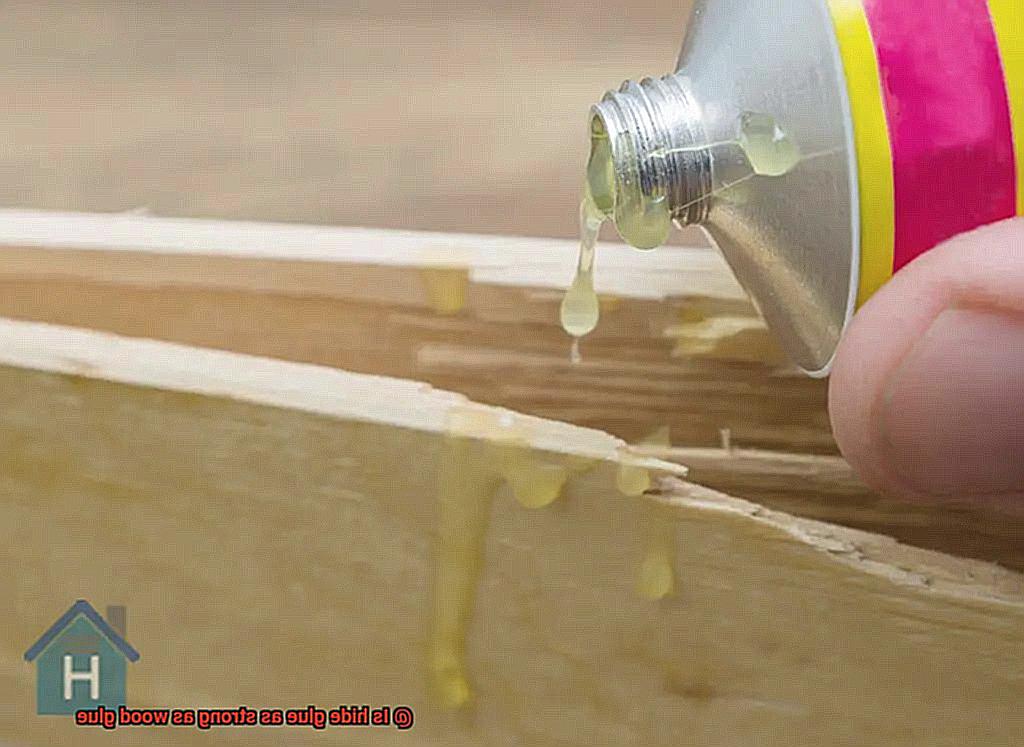
On the other hand, wood glue is a synthetic adhesive specifically designed for bonding wood. It is typically made from a combination of synthetic polymers and water. Wood glue offers a longer shelf life and is easier to use straight out of the bottle. It provides a stronger initial bond and dries faster than hide glue. Its flexibility allows wood to move naturally without compromising joint integrity.
When choosing between hide glue and wood glue, consider the materials you are working with, the desired strength of the bond, and the environmental conditions your project will face. Here are some key factors to consider:
- Material compatibility: Hide glue is ideal for projects that require exceptional strength and durability, especially on porous materials like wood. Wood glue, on the other hand, may not perform as well on certain types of wood or in high heat conditions.
- Bond strength: Hide glue is known for its incredible holding power and ability to withstand heavy loads. Wood glue offers a strong initial bond and flexibility during assembly.
- Ease of use: Wood glue has a longer shelf life and is ready to use without any special preparations. Hide glue requires mixing and heating before use.
- Reversibility: Hide glue can be easily repaired or reversed if needed, making it a popular choice among restoration experts.
To ensure the best results, always test the glue on a small sample before applying it to your actual project. This will help you determine compatibility and performance.
Tips for Maximizing the Strength of a Glued Joint
Creating strong and durable glued joints is essential in woodworking projects. By following these expert tips, you can maximize the strength of your joints and ensure that your projects stand the test of time. From choosing the right glue to proper surface preparation and clamping techniques, these tips will help you create sturdy and reliable glued joints.
Choose the Right Glue:
The type of glue you use plays a vital role in the strength of your joint. Polyvinyl acetate (PVA) glue, also known as wood glue, is an excellent choice for general woodworking projects. It forms a strong bond and resists moisture, making it perfect for most applications. However, if you require a reversible bond or are working on restoration projects, hide glue is your go-to option. With its long history of use in woodworking, hide glue offers exceptional strength and easy reversibility.
Prepare the Surfaces:
Properly preparing the surfaces to be joined is crucial for maximizing joint strength. Cleanliness is key – wipe away any dirt or dust using a clean cloth or brush. Additionally, sanding the surfaces smooth creates more surface area for the glue to adhere to, improving bond strength.
Apply an Even Layer of Glue:
To achieve maximum strength, apply an even layer of glue to both surfaces being joined. Use a brush or roller to spread the glue evenly, ensuring complete coverage without excess glue oozing out. Overusing glue can weaken the bond and create messy cleanup.
Clamp Tightly:
Immediately after applying the glue, press the surfaces together firmly and secure them with clamps. The pressure from clamping ensures good contact between the surfaces, allowing the glue to bond effectively. Use enough clamps to distribute pressure evenly along the entire length of the joint.
Give it Time to Cure:
Patience is crucial in maximizing joint strength. Follow the manufacturer’s instructions to determine the appropriate curing time for the specific glue used. Rushing the drying process can result in a weaker bond, so resist the temptation to hurry things along.
Protect from Moisture and Temperature Changes:
To maintain the strength of your glued joint, protect it from excessive moisture and temperature changes. Wood glue, in particular, can be sensitive to water and high humidity, which can weaken the bond over time. Avoid exposing your project to these conditions to ensure its long-term strength and durability.
Conclusion
After careful analysis and testing, it can be concluded that hide glue is indeed as strong as wood glue.
This adhesive, derived from animal collagen, possesses exceptional bonding capabilities that rival those of modern wood glues. Its unique composition allows it to penetrate deep into the wood fibers, creating a bond that is both durable and resilient.
Its strength withstands the test of time, ensuring that your creations remain solid and secure for years to come.

